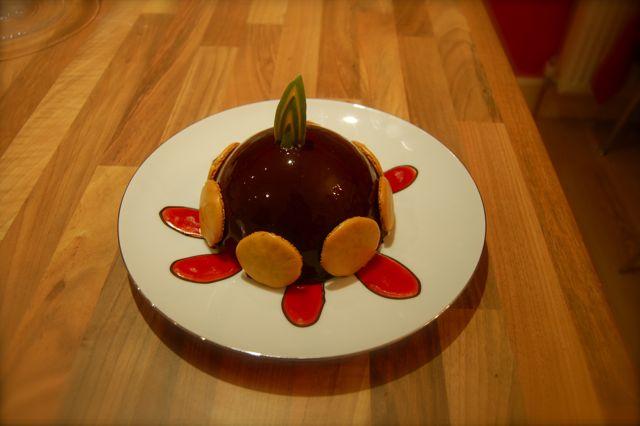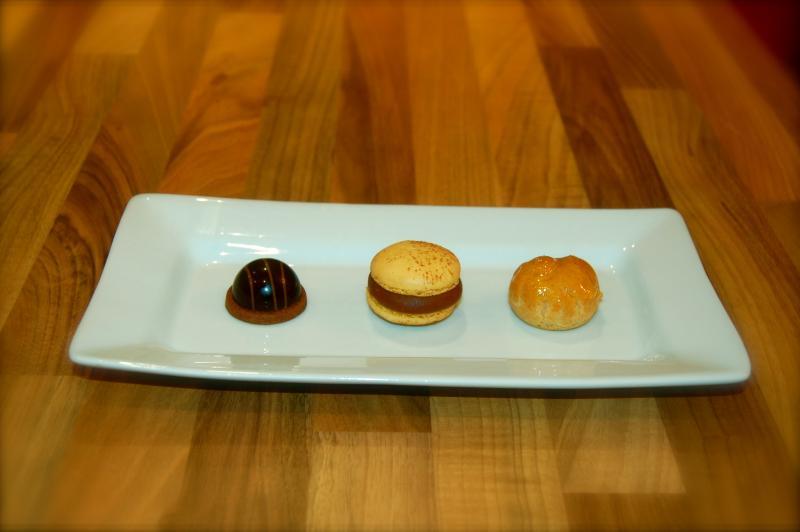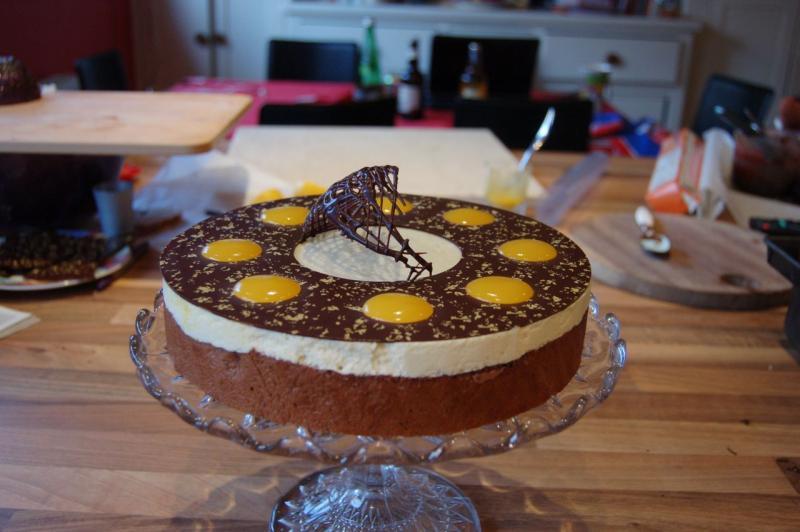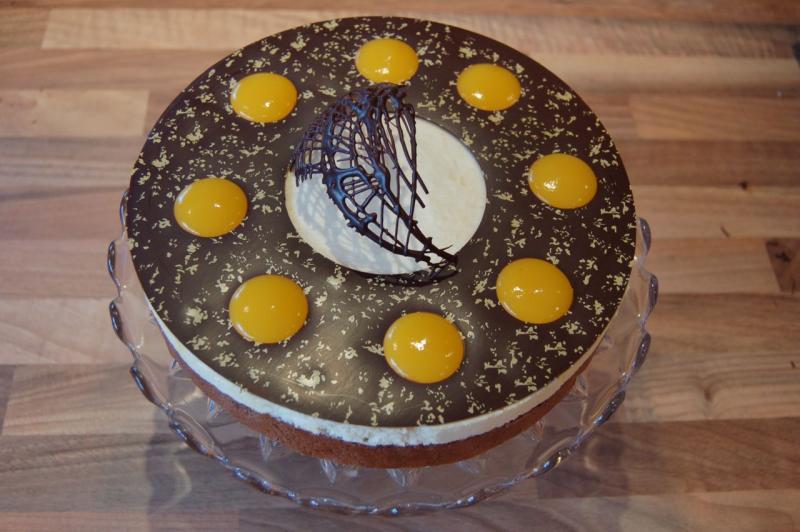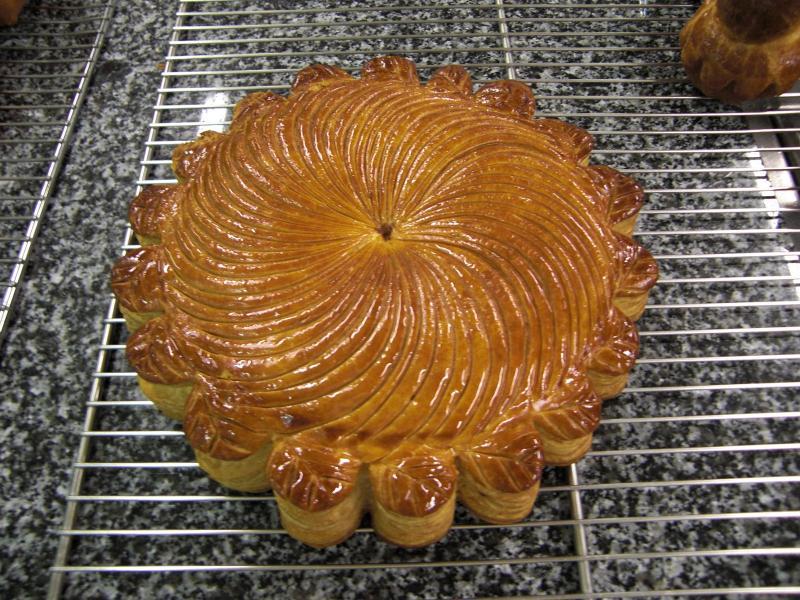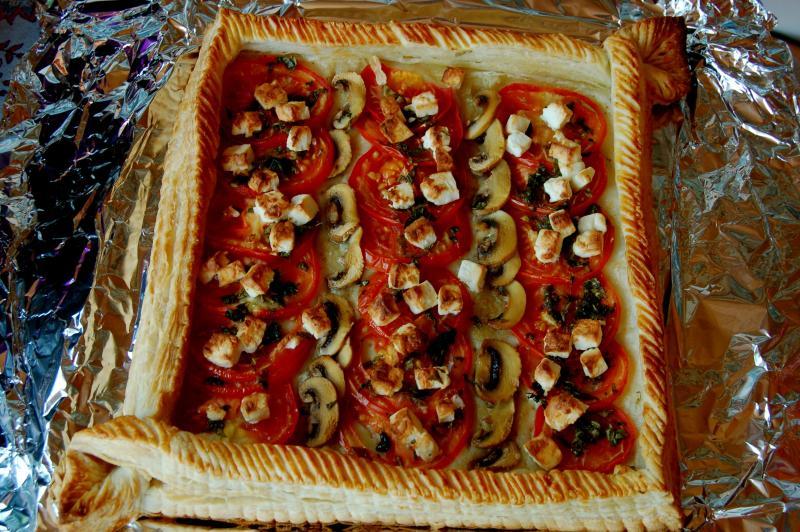-
Posts
139 -
Joined
-
Last visited
Content Type
Profiles
Forums
Store
Help Articles
Everything posted by RichardJones
-
Beth, Manjari is a Valrhona chocolate from Madagascar. R.
-

Couverture: Sources, Favorites, Storage, Troubleshooting
RichardJones replied to a topic in Pastry & Baking
That will be why it was especially thick, Danny! This link should send you to Callebaut's rating page with accompanied uses: http://www.callebaut.com/application_table.dhtml?language=ocen,inConfectionery=1,inPastry=0,inHoreca=0 R -

Couverture: Sources, Favorites, Storage, Troubleshooting
RichardJones replied to a topic in Pastry & Baking
Good point, Kerry. I was referring to their 'all-purpose' (3 drop) chocolate which is thicker than an equivalent from Valrhona. As it happens, Callebaut do not advise using the 5 drop for moulding. I imagine it makes very fragile shells (which I suppose you might just be after for certain purposes...) Danny, you may find the videos on the Callebaut website interesting. Here is one which discusses viscosity and you can link to others from there: http://www.callebaut.com/ocen/4842 R -

Couverture: Sources, Favorites, Storage, Troubleshooting
RichardJones replied to a topic in Pastry & Baking
That's pretty much it. Couverture has just cocoa butter and no vegetable fats. Tempering generates the stable kind of crystals which may be type five, type vi or beta crystals and so on depending on whom you ask. Generally a pâtissier uses couverture for all applications. They are often higher quality on the cocoa front (than candy style chocolates) and so have better flavour for the other applications, too. You would certainly want to use a good couverture for a ganache. In fact, many of the big names (e.g. Wybauw) even suggest using tempered couverture for ganaches. Cacao Barry and Callebaut (part of the same organization, I believe) are a good bet, but as RWood points out, Callebaut is quite thick when tempered. It is perfectly workable, though, and the Callebaut I've used I have liked. Valrhona is superb and is the chocolate of choice for all the pâtissiers I know. But there are cheaper alternatives (see post above). Some Belgian chocolatiers only use Belcolade, for instance. My suggestion would be to get a selection and grade them for their taste and ease of working and go from there. Re your tempering point, definitely worth learning to temper by hand IMHO. Moulded chocolates will have a different shine on them to dipped chocolates (without acetate) but dipped chocolates should still have a nice tempered sheen to them. Do you feel you are ready to be setting up as a professional? -
Just FYI, here is an Oolong chocolate recipe from Wybauw: http://www.callebaut.com/ocen/2237.
-
Hello, Sarah. I would say welcome, but I am rather new here myself. When I first made crème pâtissière I was surprised by how thick and (when chilled) gelatinous it was so we have rather opposite experiences. It is interesting to note the different cooking times people suggest for it. I flicked through a Gordon Ramsay book the other day and he says not to boil it! Whereas all French recipes I have seen require boiling (after all, this is one of the main differences between a crème pâtissière and a crème anglaise) -- from as little as 1 up to 3 minutes. Why don't you post your recipe so we can see the proportions? After tempering the yolks, I would recommend bringing the cream back to a decent boil on a good heat (but stirring ceaselessly and with care to make sure the entire cream is moving) for at least a full minute once the boil is achieved. That's how they do it in French pâtisseries so there might be something to it. I would also suggest properly chilling the cream (immediately after cooking) before filling the tart. To do this cover a baking tray with cling-film, pour the cream onto it and spread it out, then cover with a second layer of cling film. Spread the cream as thinly as possible. Let cool a little then pop into the fridge until it is well set. Then, to use, loosen up the cream with a mixer. It may seem perverse to cool it down only to have to loosen it up again but you end up with a better result and a cream which is a good temperature. Hope this helps. Yours, Richard
-
I really appreciate all the advice, thanks very much. I haven't yet had the chance to experiment so it won't be until Easter now. I'll post results! Richard
-
Dear brokenscale, What you see in that image is probably plain white chocolate without a filling. They are called cigarettes and are available commercially ready made, for example: http://www.pastrychef.com/CHOCOLATE-CIGARETTES_p_701.html They are not too hard to make but there is a knack to them which takes time to acquire. Here is a video of the technique for the striped variety: Part 1: Part 2: Hope this helps, Richard
-
If the cake is rising in the oven but then collapsing I would suggest continuing cooking beyond the normal time but at a slightly lower oven temperature to prevent the burning you describe. This should help dry out the cake and firm the structure. Another idea might be to add some kind of starch to the batter. A lot of French sponges, for instance, use potato starch or cornflour. Sieve it in with the flour at the start and see how you go. This should help add structure. R
-
Thanks for the comment, Kim! I am sure the people at eGullet can help get you up to speed with your tempering. I've been busy cooking quite a lot lately since I am about to return to university (I have a final year to polish off before I can move into doing this full-time). Today was my last day in a decent kitchen and I made this: It's a bomb. There is a deep disk of mango and lychee sorbet in the very centre, the body is vanilla ice cream with a little cinnamon and the décor is sliced mango, a chocolate glaze and macaron shells (of a sort -- I had a dire problem with some new colourings, the batter collapsed and the result was less than perfect with no time to redo). I decorated the plate with piped chocolate and a mango/sanguinello gelée. I think it looks small in the photo but it served five with seconds. The glaze was an untested recipe I picked up (cocoa, cream, water, sugar and gelatin) but it worked pretty well even though it's not designed for frozen things. Happy to pass on the recipe to anyone who cares. I've no bomb mould but made this using half the aluminium mould for a spherical Christmas pudding. I demoulded with a blow-torch. Highly recommended -- this was easy to do but I think it looks quite fun. R
-
That thread appears to be locked, CanadianBakin'. Perhaps I am misunderstanding it... could you move this across if you think appropriate? Here, for Aloha Steve and chocoera is the method I used for the macaron in my post above. It is based on Hermé's French meringue recipe from Le Larousse des desserts but I do not quite follow it as written and, besides, I do not think the book is published in English so hope this might be of interest. 280g ground almonds 280g icing sugar (I think you might say powdered sugar across the pond) 200g icing sugar 7 egg whites (or, more accurately, 245g) 1. Pop the ground almonds and first quantity of sugar into a food processor and process on high speed for as long as you can bear. This is to ensure a very thorough mixing and to reduce the size of the almond particles. Sieve this mixture most carefully and jettison any debris left in sieve. 3. Whisk egg whites to soft peaks, then keep whisking as you add the second quantity of sugar bit by bit/in a thin stream. (For those familiar with the original recipe I decided to add this portion of the sugar to firm up the meringue.) Add any food colourings at this stage. The meringue should be fairly stiff but not stiffest. 4. Fold the almond/sugar mixture into this meringue little by little with a spatula. Be very gentle. Imagine you are caressing a very soft chinchilla which is easily provoked to snapping with sharp teeth, for instance. I do not recommend waiting for each addition to be fully incorporated before adding the next slug of almond/sugar. This would lead to the mixture being overwrought. It is expected, though, by the time all the dry matter is incorporated (and there is a lot of it) that the mixture will be very smooth and more of a viscous, moussey liquid than the meringue started out. Imagine that when you pipe, the nipples will need slowly to retract back into the body of the macaron to give you a smooth shell. 5. Pipe onto baking paper and leave to crust for at least 30mins. Mine were about 2.5-3cm across. Generously spaced (2+cm). Piping is another skill in itself but one ought to be able to achieve good round beasts. 6. Pre-heat oven to 250C. Place macarons with their baking paper on single baking trays, pop in oven and lower temperature to 180C until cooked (10-12 mins). Keep the oven door ajar with the handle of a wooden spoon. At around 7 mins I was rotating the trays due to uneven heat distribution in my oven. I also used this opportunity to check the wobble. To test wobble place a finger on one of the shells and see how much it wobbles on its foot. As long as there is still wobble the macaron is underdone. When it is all but firm, Bob's your uncle. 7. Remove the macarons from the oven and carefully pour a little water between the baking tray and paper. This is meant to help release but I have not done an empirical test. It may be an old wives' tale. Let the water boil off then slip the macarons and paper onto a drying rack. Then, when cool, depaper them. There is a nice little technique here which involves using the rack to peel the paper off cleanly but I cannot begin to put it into words understandably. 8. Garnish with ganache and so on. I hope this is not in conflict with other things you have heard and I hope it might work for you... abuse me over PM if not or if you have questions. Richard NB I have not tried this method with larger macarons. Some evidence suggests lack of doubling baking trays and other details not mentioned here may cause malfunctions with the larger diameters.
-
Dear Aloha Steve, Thanks for the comment. I am sure you will have great fun making macarons. Although they can be tricky to get right there do seem to be several ways of going about it. When I trained we used the Italian meringue method which was worked every time and gave perfect results but I have never managed to replicate it in a domestic kitchen. On the other hand I have always had success at home with French meringue. I imagine between those books and posts you have already laid hands on you have more than enough (conflicting) information. I can walk you through the method I used for the above step by step if you like but perhaps best over a PM so we do not hijack this thread. Let me know. In the mean time a few random points: - I did let these crust. The first batch for 20mins, the last batch for over an hour. There was no difference in the foot. - I left the oven door ajar (wooden spoon handle). - I did not double the oven trays. - Before ovening each batch I heated the oven to 250C and then reduced to 180C for the cooking period. Yes, I was working form French copies of Hermé's books so if the cock-up was due to mis-translation it was entirely my fault. My sister gave my Wybauw's Chocolate Decorations book for Christmas in English and the translation is abominable. Not only is it hard to read, some things are simply wrong and at one point the opposite is said to what needs to happen! (I happened to read it in French when I was out there so remembered some of the detail.) Let me know if you want anything in French translated. Richard
-
I love the look of that raspberry tart. My parents had a big tea part today (40 people) and I made a pâtisserie course for them. On the left is a dark chocolate shell with milk chocolate décor, filled with a cinnamon chocolate cream (a light ganache made with crème anglaise whose cream was infused with stick cinnamon) with a small sablé hollandais underneath. In the middle is a passion fruit and milk chocolate macaron (Hermé). On the right is a small choux with a thin crunchy caramel shell and filled with vanilla crème pâtissière swirled with caramel. I also made a fourth with a caramelized puff pastry layer, a light mincemeat cream (crème pâtissière, Italian meringue, whipped cream and mincemeat) topped with a tiny strip of hazelnut nougatine, a sliver of candied orange zest and a little square of orange gelée. No photo of this. Interestingly on the macaron front, I tried the recipe from Hermé's macaron book for the first time (Italian meringue based) and it was an utter disaster, unservable. I started again from scratch with a French meringue (Hermé's in Larousse) and had much more success... R
-
Oh, no, it's nothing official. It's just two mousses nicely tarted up. It was loosely inspired by an entremets we made at school which we called a Prestige framboise. That was with raspberry, clearly... I am just travelling but I can try and send a rough recipe when I return if you like. Do you know how to put an entremets together from the component parts? R
-
On the gelatin/water question I think a good rule of thumb is to dissolve 1 gram of gelatin in 5 grams of water. The water should not be hot in the first instance (this can actually slow down dissolution as it can cause the outer surface of the grains to swell quickly and prevent the water permeating through -- or so I have been told). And it is also best to put the water in a small container and sprinkle the gelatin over the surface (they say if you pour water onto a pile of gelatin the grains at the bottom can be trapped dry by the hydrated gelatin). Then to heat the hydrated gelatin for use pop it in a microwave for 15 or so seconds until it just starts steaming. Hope this helps, R PS Not totally convinced by egg yolks in a White chocolate mousse but that's another story...
-
Dear e Gulleteers, I wonder if a more experienced chocolatier or two might please be able to recommend some ganache recipes to show off some excellent Scotch Whiskys, please. I am hoping to produce chocolates with different blends/vintages (of the same brand) to offer for side-by-side tasting. I would really appreciate any advice you might be able to give. Thanks, Richard
-
Great stuff, dystopiandreamgirl, lovely looking logs. Here's how I spent Boxing Day: A chocolate mousse on the bottom, a layer of chocolate biscuit à la cuillère (imbibed with a tropical syrup), a mango mousse, chocolate décor with mango gelée. There's also a thin biscuit around the edge of the bottom half. The mousses are cream and Italian meringue based.
-
Hello cookin4acravin, Good luck with your Ladyfingers. Here are a few points about biscuit à la cuillère which you may already know: - Don't over whisk the egg whites. They should be firm but still a little supple. - Fold really carefully! The egg yolks don't have to be completely mixed in at the point of adding the flower... this will help prevent overworking the batter. - I would pipe onto baking paper. You can draw lines on the reverse side as a guide. - Once piped sieve a fine dusting of icing sugar over the biscuits. - After about 10 mins when that first layer is dissolving, sieve a second layer of icing sugar. This helps achieve the pearling effect (the tiny balls of sugar you get on decent b à c). - I would recommend a hotter oven. We used 210C at college -- I've just checked in Hermé and he suggests 220C. This also helps with the pearling. - Rather than baking for exactly 10mins keep monitoring progress. Once they start to colour ever so lightly around the edge is normally T. You can check that the biscuits are coming cleanly off the paper. - For the perfectionist, cook until the sugar pearls and then open the vents in the oven. This evacuates the steam. You can achieve a similar effect on a domestic oven by holding the door open a crack with a wooden spoon handle. Depends on your oven though. Hope this helps, Let us know how you get on, Richard
-
PS Just found a little photo-video about puff pastry I made here. It's not particularly informative but if you have a minute to kill...
-
If the butter is spreadable with a spatula that would strike me as far too soft -- and very likely to lead to the marbling you describe. You could use that technique to get the butter into the right shape but I would then want to fridge it again to harden it up a bit. Re pounding the butter, to get it nice and neat as in the first photo in the link above, I used a guitar (thick flexible plastic) sheet. If you roll out the butter inside the sheet (folded to make an envelope) you get a very clean result. You can see the edge of the sheet in the photo. I have heard of pâtissiers using baking powder in their puff pastry for extra lift...
-
Hi Rickster, I'll do me best to answer your questions although I am sure those with more experience will chime in. The texture point is, as you say, rarely mentioned in print but something which was rammed home at school. The butter is indeed likely to be firmer. I tend to chill the butter and détrempe for as long as possible, then I pop the butter out on the worksurface (in cellophane) until it softens to match the texture of the détrempe. That is for the inverted puff pastry we normally use where the butter has already been thoroughly mixed with flour. For croissants and classic puff I prefer the opposite approach. Once the détrempe is fully chilled I prepare the butter (also chilled) by softening it in a silpat with a rolling pin (this softens it without raising the temperature too much). Once knocked into the desired shape I then pop it into the fridge to harden as much as the détrempe. But there are many ways to achieve the same. Your point about small pieces of butter is exactly what marbrage is. It is often visible through the pastry. If you think about the mechanics of how the pastry is going to rise, if the butter is in small pieces it is not creating a complete impermeable layer to trap the steam. I am afraid I am not in a position to comment about water content. But you should be able to make a decent puff with any decent quality butter. Here is a quick post I made a while ago on inverted puff pastry: http://candidcake.blogspot.com/2009/04/puff-magic-dragon.html And here is a little snap of a Pithiviers I made with inverted puff pastry:
-
Rickster, I have seen this problem with croissants before. Thanks for the reminder. It usually results from the layers of the pastry being crushed... i.e. they have been rolled too thinly or the textures of the butter/détrempe were different or the rolling has been uneven. If the butter is harder or softer than the détrempe when you come to combine/roll out you will end up with what the French call 'marbrage' (marbling) rather than separate layers. This can cause the fat to run out. In fact, this might be cteavin's problem. To get round this problem of marbrage: 1. When combining the butter and détrempe on the first turn, ensure the textures are the same. This might mean taking either part out of the fridge for half an hour to bring it closer to room temperature -- or putting one part in the freezer if the textures are softer. Does that make sense? 2. When rolling out be very careful to apply even pressure with the rolling pin in all directions. I.e. press evenly with both hands and when pushing back and forth try and keep constant pressure. If the pastry starts to warm up do not hesitate to pop it back in the fridge. 3. Do not roll the pastry too thinly during the turns. If you roll thinly, some of the layers risk breaking through which defeats the object. It seems this is easier to do with a leavened puff pastry... when I was at school we did just the initial combining turn, a double turn and one single turn on our leavened puff pastry. I hope all of this is clear. Richard PS Re using other fats -- the French would die if you suggested using lard in puff pastry. I understand a lot of pâtissiers use margarine and a special grade margarine is available just for making puff pastries. I don't see why on couldn't use a mixture of margarine and butter (for flavour) - or even other fats. But what would be the aim?
-
Any chance you could take a photo of, say, some small puff pieces (without any fillings) on the baking tray to show what has leaked? There may be more moisture in your butter (sometimes in France they use an extra dry butter especially for feuilletage); but that moisture ought simply to evaporate and should not cause any fat to leak. In my references there is a slightly higher ratio of dough to fat but around the 60:40 mark. Have you ever tried a 70:30? Are you using standard flour? An excellent mystery. Anyone have any ideas?
-
Hi, cteavin. Are you doing a classic puff pastry or an inverted one? What is your ratio of fat to détrempe? What temperature are you baking at? How thin are you rolling the pastry before baking? How long do you chill the pastry between each turn and also before baking? This is not a problem I've ever seen but maybe with a bit more information someone can help. Yours, Richard
-


